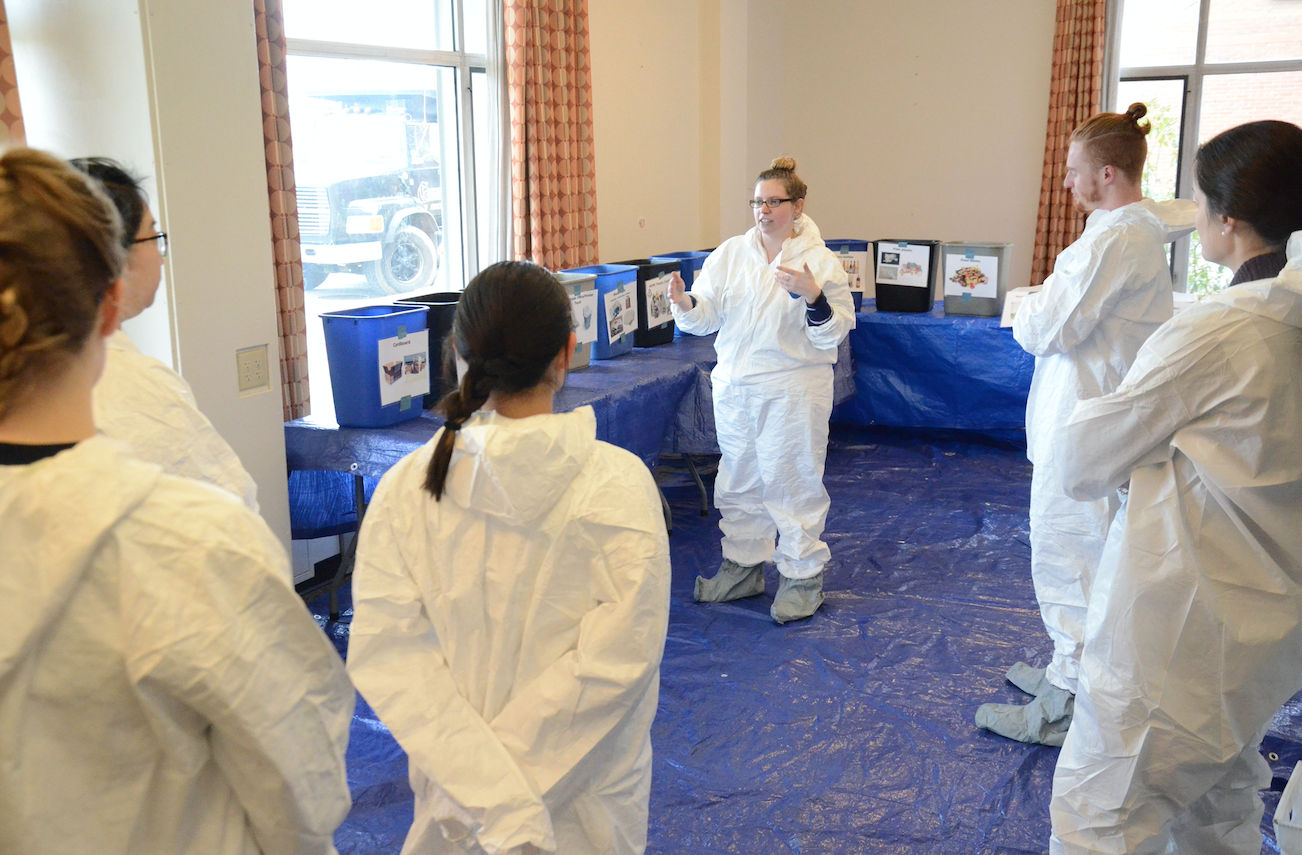
Material Flows at MIT: Q&A with Rachel Perlman, MITOS Fellow and Student Researcher

Rachel Perlman joined MITOS in the fall of 2016 as a student fellow, working with the office to perform a comprehensive analysis of the MIT campus’ material flows, also the topic of her thesis for her Ph.D. at MIT’s Institute for Data Systems and Society. She received her B.S. in Environmental Science from Cornell in 2012, and her M.S. from MIT’s Technology and Policy Program in 2015. Here, she sits down to discuss the motivation behind her work, why she digs up data from dormitory trash, and how to make connections as a student researcher.
Q: What motivated you to study MIT’s material flows?
A: I’ve always been interested in what’s known as urban metabolism – how cities or sub-units of cities consume materials from start to finish. What do we buy? How do we use it? And what do we do when we’re done with it?
For my Ph.D., I wanted to study a system where I could really dive down into the specifics to model the material flows at a greater level of accuracy. As a student here, I’m part of MIT’s metabolism, so I inherently found it interesting. Also, from a review of the current scholarship, no one has modeled the material flows of a university. Most analyses are done at the level of a city and they tend use economic and trade data, which is more of a top-down modeling approach.
What is also interesting about studying a university like MIT is that we’re an institution, we have a lot of autonomy, and we make a lot of policy decisions at the university level about what we buy and how we dispose of things. So, my research could really have an important, tangible application on the way we use materials. The outcomes of my project could help the university operate more sustainably, and serve as a model for other campuses. I have a unique opportunity here.
Q: How do you go about modeling the materials coming in and out of MIT?
A: I am taking a bottom-up approach. I aggregate and analyze purchase data, inventory data, and historical records of what we’ve purchased and how much we’ve thrown away from across the Institute. It’s like piecing together a puzzle.
Sometimes I need to collect my own data. For example, MIT has data on the total recyclable mass that we send to our contractors for recycling as well as the total mass of trash that gets incinerated. But MIT doesn’t generally know the contamination rate – how much trash goes in the recycling and how much recycling goes in the trash. And it doesn’t know the breakdown of how much metal, how much plastic, and how much paper is in the recycling.
In order to get a better sense of what the composition of waste from dorms, labs, and academic buildings looks like, I conduct what are known as waste audits. A team of volunteers and I will put on these clean suits, and we’ll sort through and weigh all of the waste coming out of a certain building on a given day.
The waste audits give me a snapshot in time of the composition of the waste, and with a few different snapshots, I can extrapolate and draw some trends about the average composition of the waste being generated by certain buildings on campus.
 Rachel leading a team of volunteers at a dorm waste audit. Photo: Paul Wolff, MITOS
Rachel leading a team of volunteers at a dorm waste audit. Photo: Paul Wolff, MITOS
Q: What are the challenges and the unexpected positives of getting to do your research and test it out on a university campus?
A: The challenges have mainly been around data acquisition. MIT keeps detailed records about purchasing and disposal, but they’re not centralized, so often the barrier to doing this analysis is locating and getting access to the right data. I’ve been working with the folks over at the Office of the Vice President for Finance on a data collection intake process, which has been a big help.
One of the most positive experiences of this project has been discovering how invested MITOS is in this kind of work, and partnering with them. Navigating MIT with all of its moving parts can be challenging, and MITOS helped me understand how the university operates and got me connected with other people working on this topic.
To other student researchers looking to analyze their university campuses, I’ve learned that it definitely helps to work directly with the institution. For instance, if someone was interested in doing a transportation study about their university, they should work with the transportation office at their school. It’s not worth reinventing the wheel if they’ve already thought about these things, aggregated data, and done the analyses. The operations staff are also subject matter experts, and you can learn a lot from them. Forming relationships opens so many new doors and makes the whole research process much smoother.

